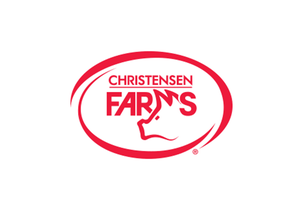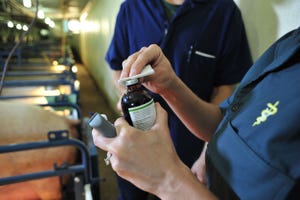Another year has come to an end and as producers look forward to the year ahead and consider their goals for 2018, is 30-plus pigs weaned per mated female per year on your list? Should it be on your list?
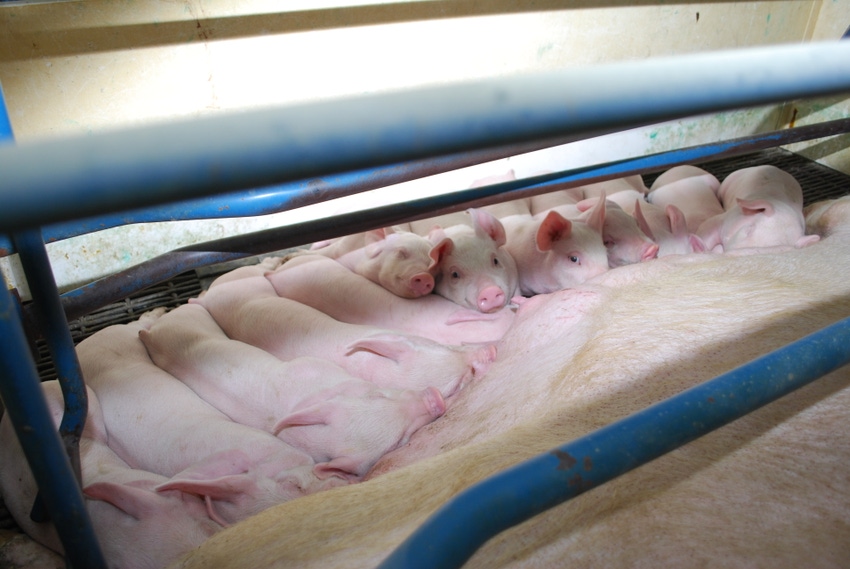
Another year has come to an end and as producers look forward to the year ahead and consider their goals for 2018, is 30-plus pigs weaned per mated female per year on your list? Should it be on your list?
Why do we focus on farms at 30-plus, it is for several reasons;
1. The Swine Management Services database has an average of 34.23 total born per mated female per year, and the top 50% of the farms are at 35.25, the pigs are in the barns.
2. There is a large portion of each sow’s costs that are fixed so for each extra pig weaned per mated female per year, it reduces the cost of all weaned pigs.
Thirty-plus pigs weaned per mated female per year may not be the right goal for your farm depending on your business model, facilities, health status and labor pool. However, taking a look at this calculator we put together, Table 1, it certainly shows the advantage of getting more pigs out the door. It is almost impossible to compare farms.
Here are some key things to consider.
• Are you counting total females or mated females?
• Are you using weaned pigs or number of pigs you got paid for?
• Is this cash flow or profit and loss?
• Is the farm new with high depreciation costs or is it older and fully depreciated?
• Are you using tax depreciation or usable life depreciation?
• Are there loans or is the farm paid for?
• Are there management overhead expenses?
• Another consideration when using the calculator is, are there additional expenses incurred for the increased production?
• For those pigs above breakeven how much extra feed did the sow eat?
• How much extra labor cost to get that pig?
• How many extra products like iron, vaccines or injectables did those extra pigs get?
In Table 1 we used an example farm with 2,400 mated female. If we can move that farm from 28 to 30 pigs sold per mated female in a year the costs based on expenses per mated female of $1,050 per year that cost per pig would drop from $37.50 to $35. That lowered cost by $2.50 per pig and at 30 pigs per mated female the income improved by $75 per sow in the farm. The question still is what these extra costs for those two extra pigs are?
Table 1

Taking a look at what it takes to get 30-plus pigs weaned per mated female we took the farms in the database and grouped them by their average pigs weaned per mated female per year for the last three years. We did this to ensure that the farms included were mature herds. Forty-three farms averaged more than 30 for the last three years and for the last 52 weeks averaged 32.08 pigs weaned per mated female. Those farms had five different genetic company females, some of those companies with multiple lines. Fifty-eight percent of the farms were in the United States and 42% of them in Canada. The units were built as early as 1970 and ranged in size from 250 to 7,400 mated females.
Chart 1 shows the range of the SMS database in pigs weaned per mated female per year for the last 52 weeks with the red system being those farms more than 30 pigs for the last three years. Some of those farms are below 30 PW/MF/YR for the last 52 weeks.

Chart 2: Total born per mated female per year for the last year ranged from 33.47 to 41.84 in those farms.
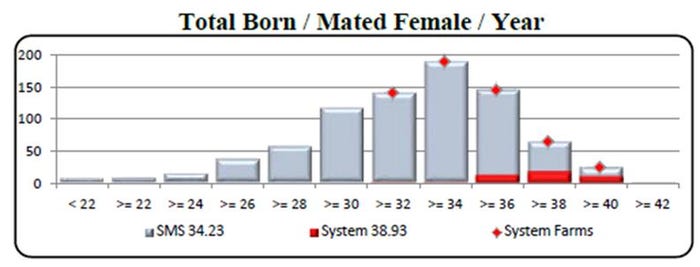
Chart 3: Piglet survival ranged from 77.4% to 90.3%.
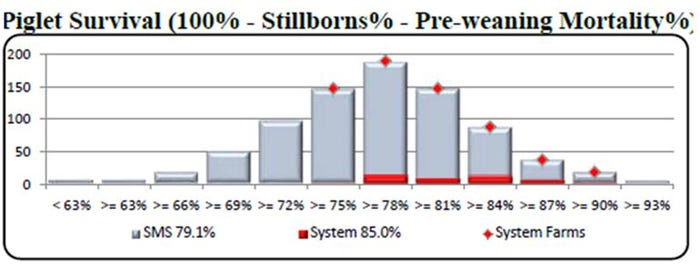
Chart 4: Wean-to-service interval ranged from 4.32 days to 10.05 days.
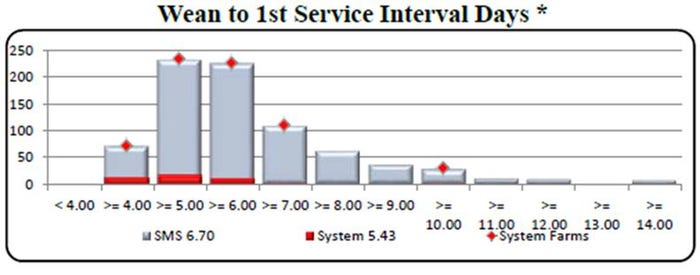
While wean age ranged from 17 days to more than 27 days for the last 52 weeks as seen in Chart 5, Chart 6 shows that death loss has been trending up on these farms over the last three years just as it has in the SMS database, but at 5.8% for those farms over 30 PW/MF/YR compared to Chart 7. The death loss trend for farms that averaged between 20 and 25 PW/MF/YR for the last three years at 10.2%. Chart 8 shows the range of pigs weaned per female farrowed for the last 52 weeks, farms at 30-plus are weaning on average 12.82 pigs per female farrowed.
Chart 5
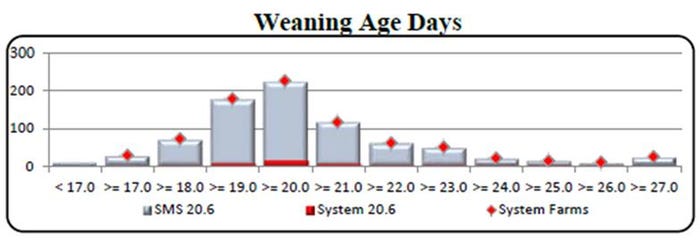
Chart 6: Female death loss for farms averaging 30-plus PW/MF/Y
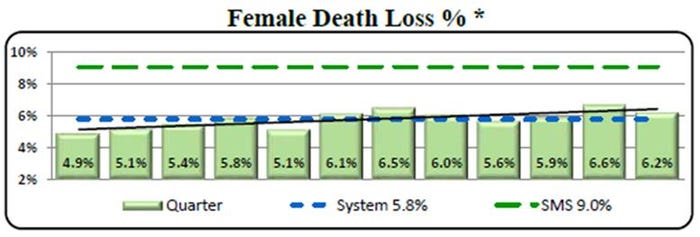
Chart 7: Female death loss for farms averaging 20-25 PW/MF/Y
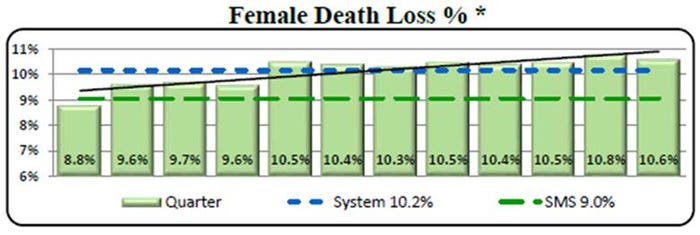
Chart 8
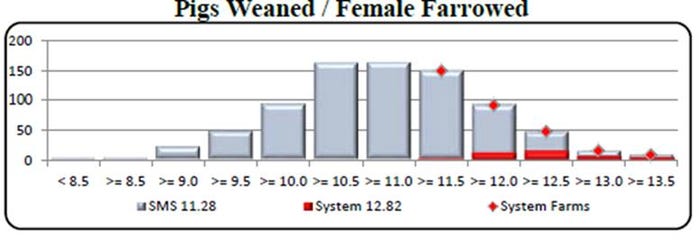
So, besides production numbers what are some other numbers you should be focused on to measure improvement?
What about:
• Employee replacement rate?
• Percent of year fully staffed?
• Staff training?
If you track these over a couple of years, you will likely see that production performance would improve with lower employee turnover and a high percent of time fully staffed.
Table 2 provides the 52-week rolling averages for 11 production numbers represented in the SMS Production Index. The numbers are separated by 90-100%, the 70-90%, the 50-70%, the 30-50% and the 0-30% groups. We also included the 13-week, 26-week and 12-quarter averages. These numbers represent what we feel are the key production numbers to look at to evaluate the farm’s performance.
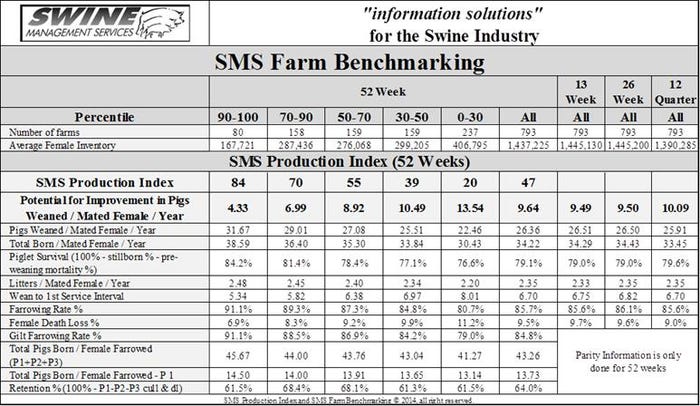
At SMS, our mission statement is to provide “Information solutions for the swine industry.” We feel with the creation of different SMS Benchmarking databases for all production areas we now have more detailed information to share with the swine industry. We enjoy being a part of the National Hog Farmer NHF Daily team. Previous Production Preview columns can be found at NationalHogFarmer.com.
If you have questions or comments about these columns, or if you have a specific performance measurement that you would like us to write about, please contact Mark Rix, Ron Ketchem or Valerie Duttlinger.
About the Author(s)
You May Also Like
